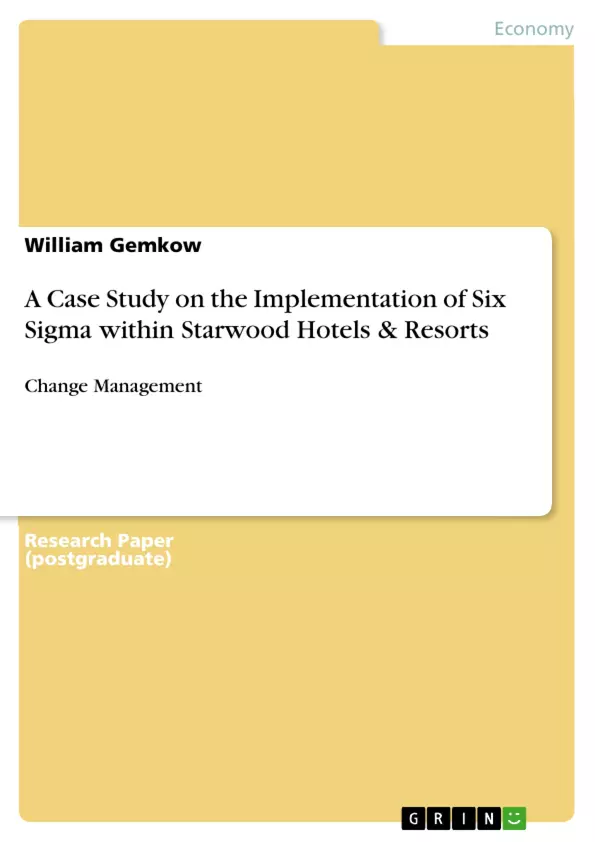During the last years, quality and consistent service experience has become crucial factor in the hospitality industry; shareholders invest only in reliable products, customers become more demanding and evaluate the received services more critically and the employees drive for training and development. Continuously change and rethinking is required to keep track.
The author will analyze the change strategies used by Starwood Hotels & Resorts to launch the quality management tool Six Sigma in order to reduce the amount of bad service encounters and align the organization into one direction. The 5-P model was chosen, as it gives a simple and logical approach to the purpose for change, priorities during the implementations, involved people, change process as well as the proof of the change outcome.
The analysis shows, that the successful top – down transformational change approach by Starwood Hotels & Resorts Executives led to short – term financial benefits and increased guest satisfaction and employee motivation in the long run.
Inhaltsverzeichnis (Table of Contents)
- Executive Summary
- Table of Contents
- List of Figures and Tables
- List of Abbreviations
- CHAPTER 1: INTRODUCTION
- CHAPTER 2: CHANGE ANALYSIS
- 2.1 PRESSURE FOR CHANGE
- 2.2 KEY ROLES FOR CHANGE
- 2.3 5-P MODEL OF LEADING CHANGE
- 2.3.1 PURPOSE
- 2.3.2 PRIORITIES
- 2.3.3 PEOPLE
- 2.3.4 PROCESS
- 2.3.5 PROOF
- 2.4 SUMMARY
- CHAPTER 3: CONCLUSION AND RECOMMENDATIONS
- CHAPTER 4: BIBLIOGRAPHY
- CHAPTER 5: APPENDICES
- A. Brand portfolio SHR (in 2005)
- B. Innovation chart
Zielsetzung und Themenschwerpunkte (Objectives and Key Themes)
This case study examines the implementation of Six Sigma within Starwood Hotels & Resorts Worldwide, Inc. (SHR) and analyzes the change management strategies employed to achieve its objectives. It explores the key roles and drivers behind the change, focusing on the top-down approach of leadership within the company.
- Change Management Strategies
- Implementation of Six Sigma
- Leadership and Vision
- Financial Benefits and Customer Satisfaction
- Employee Motivation and Development
Zusammenfassung der Kapitel (Chapter Summaries)
Chapter 1: Introduction introduces the topic of change management in the context of today's organizations and highlights the importance of innovation and collaboration. It sets the stage for the analysis of Starwood Hotels & Resorts' adoption of Six Sigma.
Chapter 2: Change Analysis delves into the factors driving the need for change within SHR, emphasizing the growing importance of quality service experiences in the hospitality industry. It outlines the key roles involved in driving change and explores the 5-P model of leading change, providing detailed insights into the process.
Schlüsselwörter (Keywords)
This case study focuses on the implementation of Six Sigma within Starwood Hotels & Resorts Worldwide, Inc., emphasizing the company's visionary leadership, change management strategies, and the impact of Six Sigma on improving service quality, guest satisfaction, and employee motivation.
- Arbeit zitieren
- William Gemkow (Autor:in), 2010, A Case Study on the Implementation of Six Sigma within Starwood Hotels & Resorts, München, GRIN Verlag, https://www.grin.com/document/167854



